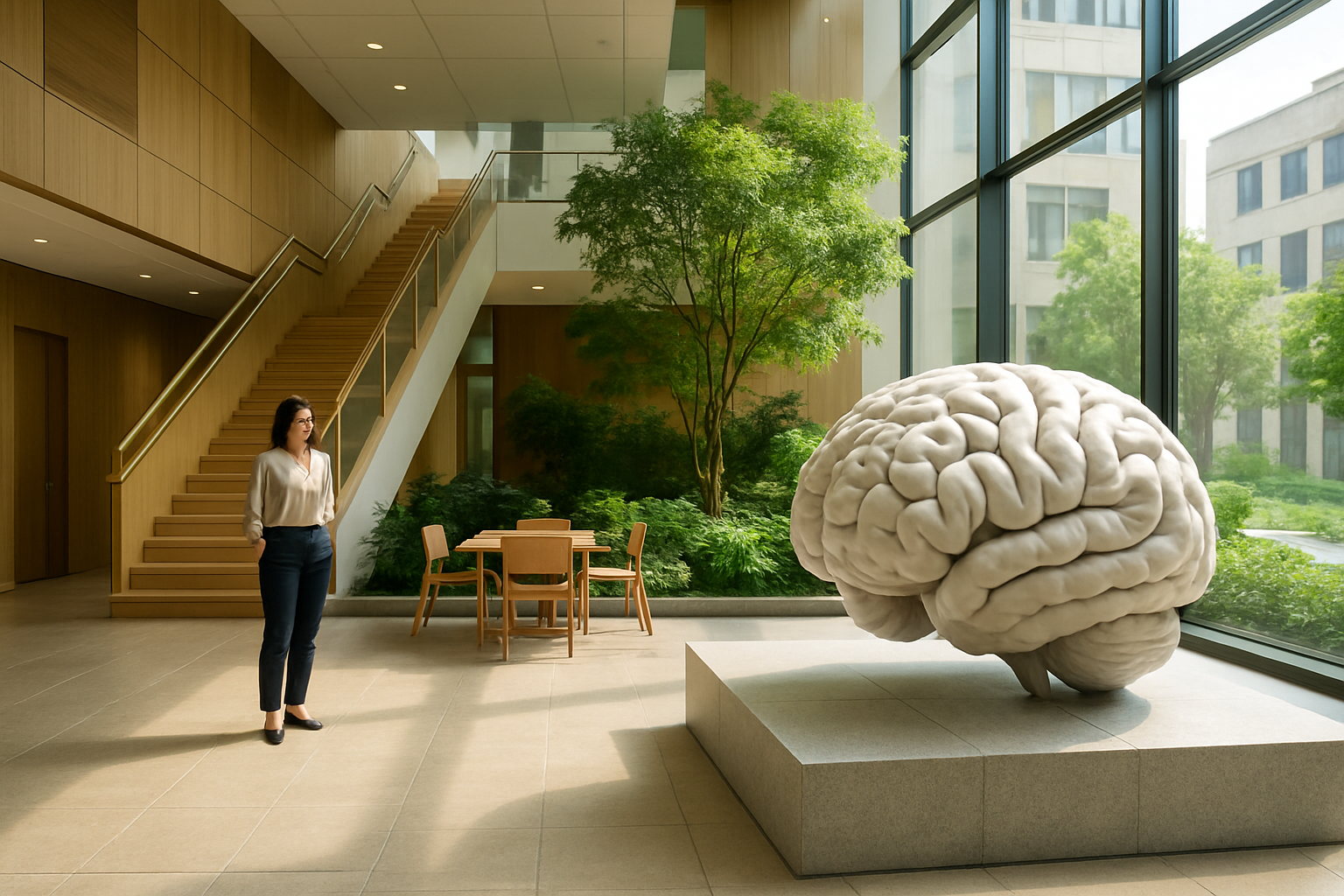Neuroarchitecture: Designing Spaces for Mental Wellbeing
In a world where our surroundings profoundly impact our psyche, neuroarchitecture emerges as a groundbreaking fusion of neuroscience and design. This innovative field explores how our built environment shapes our cognitive processes, emotions, and overall mental health. As urban populations grow and mental health concerns rise globally, the principles of neuroarchitecture offer a promising approach to creating spaces that nurture our psychological wellbeing. Read below to delve into this fascinating intersection of brain science and architecture, and discover how it's revolutionizing the way we conceive and construct our living spaces.

The development of advanced neuroimaging techniques in the late 20th century provided researchers with unprecedented insights into the brain’s responses to various spatial stimuli. This technological progress, coupled with an increasing awareness of mental health issues in urban settings, laid the groundwork for neuroarchitecture’s emergence as a distinct discipline.
Key Principles of Neuroarchitectural Design
At its core, neuroarchitecture seeks to create spaces that optimize cognitive function, reduce stress, and promote overall wellbeing. Several key principles guide this approach:
- Biophilic Design: Incorporating natural elements or mimicking natural patterns to satisfy our innate need for connection with nature.
- Sensory Stimulation: Carefully balancing sensory inputs to avoid overstimulation while providing adequate engagement for the brain.
- Spatial Cognition: Designing layouts that enhance wayfinding and reduce cognitive load.
- Light Modulation: Optimizing exposure to natural light and designing artificial lighting to support circadian rhythms.
- Acoustic Engineering: Managing sound to create environments conducive to focus, relaxation, or social interaction as needed.
Neuroarchitecture in Practice
The application of neuroarchitectural principles is gaining traction across various sectors. In healthcare, hospitals are being redesigned to reduce patient stress and accelerate recovery. For instance, the Erasmus MC Hospital in Rotterdam features abundant natural light, green spaces, and noise-reduction measures, all aimed at creating a healing environment.
In the corporate world, companies like Google and Amazon are incorporating neuroarchitectural concepts into their office designs. These spaces often include elements like circadian lighting systems, biophilic design features, and areas designed for both collaboration and focused work, all intended to boost employee wellbeing and productivity.
Educational institutions are also embracing neuroarchitecture. The Dr. Martin Luther King, Jr. School in Cambridge, Massachusetts, exemplifies this trend with its design that promotes social interaction, provides ample natural light, and incorporates outdoor learning spaces, all contributing to an enhanced learning environment.
The Impact on Mental Health and Society
As urbanization continues to accelerate globally, the potential impact of neuroarchitecture on public mental health is significant. Research suggests that thoughtfully designed environments can help mitigate common urban mental health issues such as stress, anxiety, and depression. By creating spaces that support psychological wellbeing, neuroarchitecture has the potential to contribute to broader societal benefits, including reduced healthcare costs and improved community cohesion.
Moreover, the principles of neuroarchitecture are increasingly being applied to urban planning. Cities like Singapore and Copenhagen are leading the way in integrating green spaces, pedestrian-friendly designs, and other elements that support mental health on a citywide scale. This holistic approach to urban design could play a crucial role in creating more livable, sustainable, and mentally healthy cities for future generations.
Challenges and Future Directions
Despite its promise, neuroarchitecture faces several challenges. One significant hurdle is the need for more extensive, long-term studies to validate the effectiveness of various design strategies. Additionally, there’s a risk of oversimplification or misapplication of neuroscientific findings in architectural practice.
The field also grapples with ethical considerations, such as the potential for manipulation of behavior through design and questions of accessibility and equity in the implementation of neuroarchitectural principles.
Looking ahead, the future of neuroarchitecture appears bright. Advances in wearable technology and real-time brain imaging could provide more precise data on how individuals respond to different environments, allowing for increasingly personalized and adaptive spaces. Furthermore, the integration of artificial intelligence and machine learning into architectural design processes could help optimize spaces for mental wellbeing on an unprecedented scale.
As our understanding of the brain-environment relationship deepens, neuroarchitecture stands poised to play a pivotal role in shaping the spaces of tomorrow. By harnessing the power of design to support mental health and cognitive function, this innovative field offers a promising path towards creating built environments that truly nurture the human mind and spirit.





